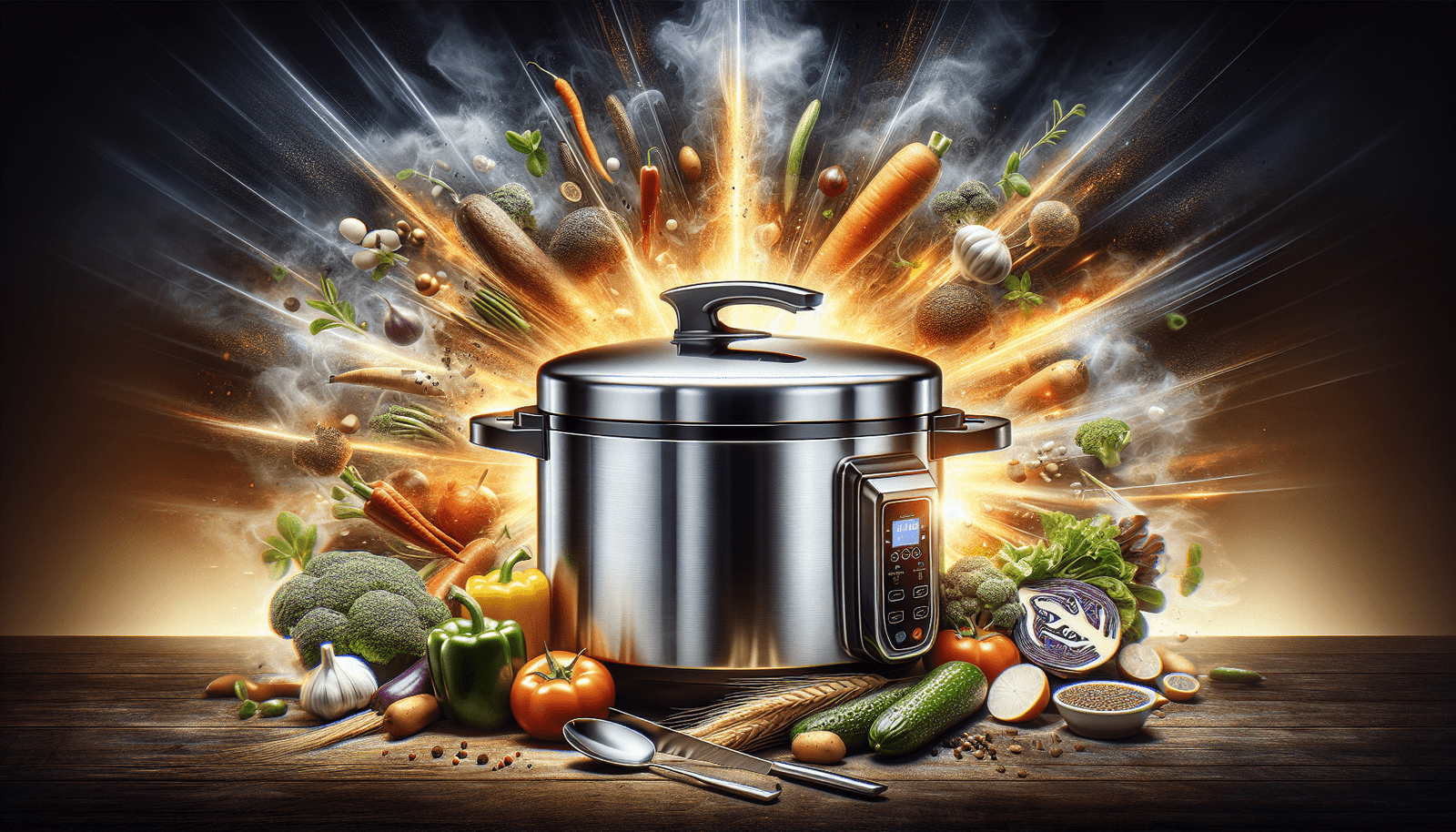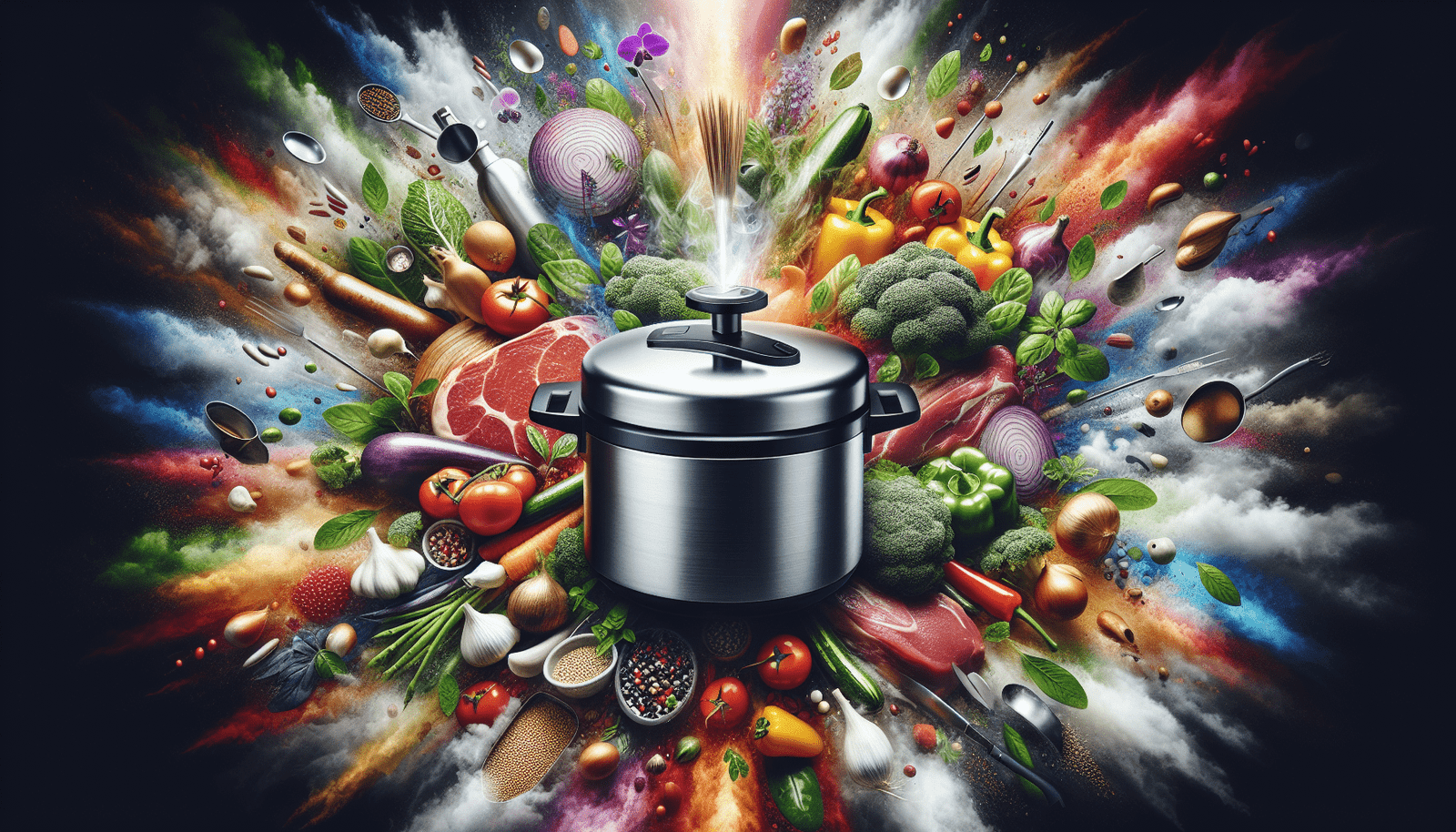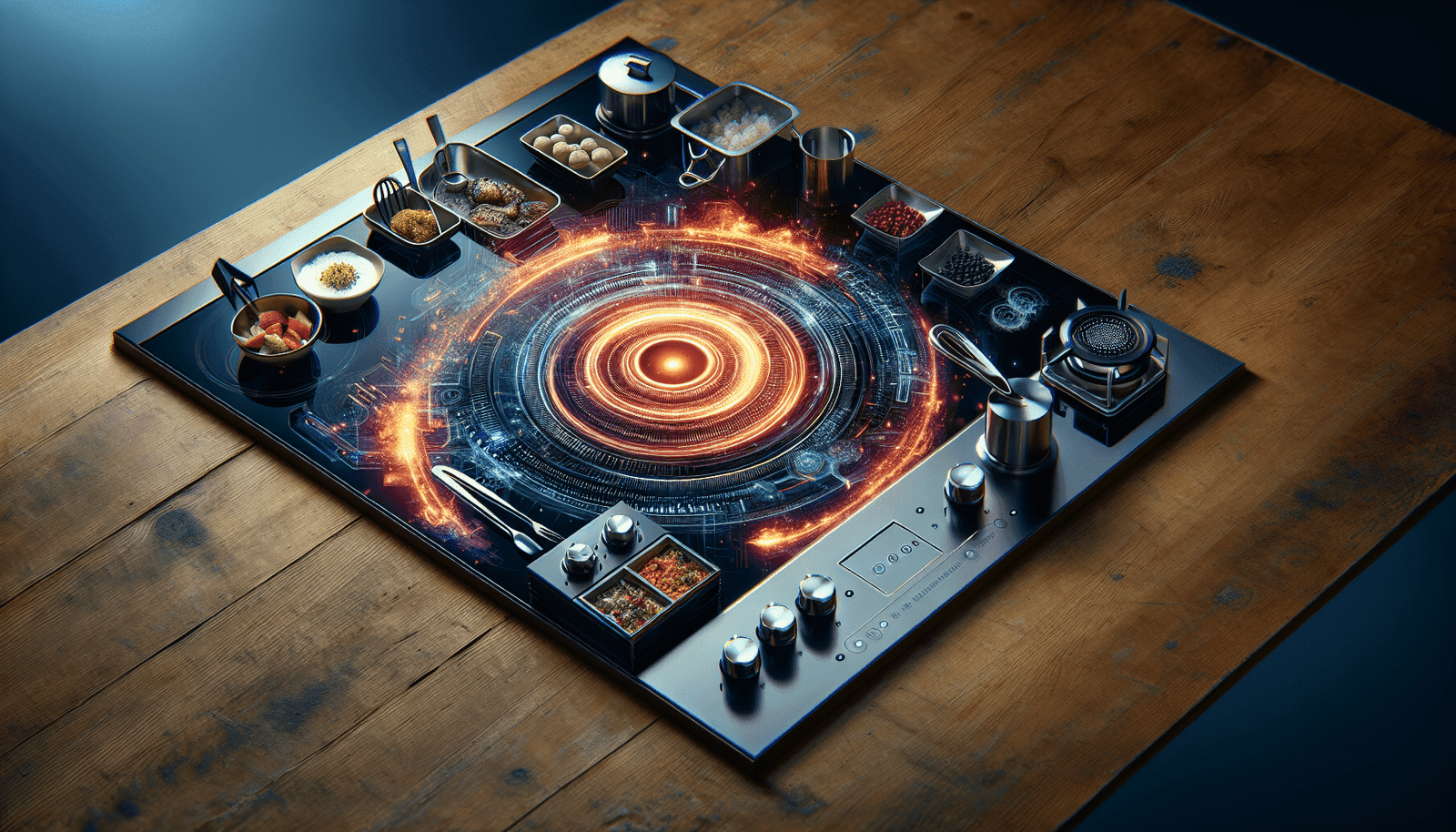Imagine stepping into the enchanting world of pressure cooking, where every meal promises a journey of flavor and efficiency like no other. At Cooking Appliance World, you’re not just exploring the finest kitchen gadgets and utensils; you’re unlocking the full potential of your culinary skills with the magic of pressure cooking. With expert reviews and exclusive deals, discovering the perfect pressure cooker to enhance your kitchen routine or professional endeavors is an adventure in itself. Whether for speedy weeknight dinners or gourmet creations, let us guide you through our top-notch selection, ensuring that premium kitchen solutions enrich your cooking experience, transforming your kitchen into a cradle of creativity and joy.
The Basics of Pressure Cooking
Understanding How Pressure Cookers Work
You might have heard about pressure cookers, but how do they actually work? At its core, a pressure cooker is a sealed pot that builds up steam, creating pressure that cooks food faster than traditional methods. When you seal the lid, water or any liquid inside boils and turns into steam, but since the steam can’t escape, it increases the pressure within the pot. This high pressure also raises the boiling point of water, allowing food to cook at a higher temperature and thus, more quickly. This method not only saves time but also preserves nutrients and flavors in your dishes.
Different Types of Pressure Cookers
There are mainly two types of pressure cookers you’ll come across: stovetop and electric. Stovetop models are the traditional type, known for their durability and high-pressure capability, making them ideal for canning. Electric pressure cookers, however, are more convenient with pre-programmed settings for different foods. They’re perfect for those who prefer ease of use and are tight on kitchen space, as they can replace several kitchen appliances.
Benefits of Using a Pressure Cooker
Using a pressure cooker comes with a slew of advantages. You’ll find that not only does food cook faster, but it also retains more nutrients and flavors compared to boiling or slow cooking. They’re energy-efficient, too, using less electricity or gas since cooking times are reduced. Plus, pressure cookers are great for tenderizing tough cuts of meat, making them a versatile tool for preparing a wide range of dishes.
Setting Up Your Pressure Cooker for the First Time
Initial Cleaning and Preparation
Before you start cooking, it’s essential to clean your pressure cooker. Wash the pot, lid, and sealing ring with warm soapy water. Rinse and dry thoroughly. It’s a small step but one that ensures your meals are safe and delicious from the get-go.
Assembling Your Pressure Cooker
Assembling your pressure cooker is straightforward. Make sure the sealing ring is properly placed in the lid and that any pressure valves or locks are clean and move freely. For electric models, ensure the inner pot is placed inside the cooker before turning it on.
Safety Features and How to Use Them
Modern pressure cookers come equipped with various safety features to prevent accidents. These can include safety release valves, locking lids that won’t open under pressure, and protection against overheating. Familiarize yourself with these features in your user manual to ensure a safe cooking experience.

Selecting Ingredients for Pressure Cooking
Best Ingredients for Pressure Cooking
You’ll find that tough cuts of meat, beans, stews, and soups excel in a pressure cooker. These items benefit from the moist, high-heat environment, turning tender and flavorful in a fraction of the time they would take otherwise.
Ingredients to Avoid in a Pressure Cooker
While pressure cookers are versatile, some ingredients don’t fare well under pressure. Delicate vegetables, milk-based products, and quick-cooking items like pasta, can overcook or curdle. For these foods, it’s best to add them after pressure cooking or use natural release to lower the temperature gradually.
How to Adjust Recipes for a Pressure Cooker
Adapting traditional recipes for a pressure cooker usually requires reducing the cooking liquid and time. Since there’s minimal evaporation, use less liquid than a conventional recipe would call for. As for time, a good rule of thumb is to cut the cooking time to about a third of the usual.
Mastering Cooking Times
Understanding Cooking Times in Pressure Cooking
Cooking times can vary significantly depending on the ingredient and the size of your pieces. A whole chicken will take longer than chicken parts, for example. Always refer to a pressure cooking time chart or your cooker’s manual for guidance.
Cooking Time Charts for Common Ingredients
Most pressure cookers come with a guide or chart for cooking times. These are invaluable references for getting your meals perfect. Keep one handy for quick reference until you’re more familiar with your device’s quirks.
Adjusting Times for Altitude Changes
Altitude can affect cooking times since water boils at lower temperatures in higher elevations. If you live above 2,000 feet, you may need to increase cooking times slightly. Consult your pressure cooker’s manual for specific adjustments.

Pressure Cooking Techniques
The Quick Release Method
The quick release method allows you to immediately release the steam and pressure inside the cooker, quickly stopping the cooking process. This method is ideal for delicate foods like vegetables or seafood that can overcook easily.
The Natural Release Method
For foods that benefit from a little more cooking time, like meats or legumes, the natural release method is your friend. Simply turn off the heat and allow the pressure to decrease on its own. This can take anywhere from 10 to 30 minutes.
Using the Sauté Function
Many electric pressure cookers come with a sauté function, letting you brown meats or sauté vegetables before pressure cooking. This step can add layers of flavor to your dishes, making it a worthwhile technique to master.
Creative Recipes to Try
One-Pot Meals
The beauty of pressure cooking is the ability to throw all your ingredients in one pot and have a meal ready in no time. Think hearty stews, comforting soups, and tender pot roasts. The possibilities are nearly endless.
Vegetarian and Vegan Options
Pressure cookers are not just for meat-eaters. Lentils, beans, and vegetables can be transformed into delicious vegan and vegetarian dishes, like curries, chili, or risotto, that are bursting with flavor.
Desserts and Sweets
Yes, you can make desserts in a pressure cooker! From cheesecakes to compotes, the moist environment is perfect for creating decadent sweets. Plus, it’s quicker and easier than traditional methods.
Cleaning and Maintenance
Routine Cleaning After Every Use
Always clean your pressure cooker after use to prevent flavors from carrying over and to maintain its condition. Wash the inner pot, lid, and sealing ring with soap and water. Check the valves and filters to ensure they’re free from food particles.
Deep Cleaning Your Pressure Cooker
Periodically, your pressure cooker may need a deep clean to keep it in peak condition. Soaking the pot and lid in vinegar or lemon water can help remove stubborn stains and odors. Review your manual for specific advice on deep cleaning your model.
Replacing Seals and Parts
Over time, you may need to replace the sealing ring, pressure valve, or other parts to ensure your pressure cooker continues to work correctly. It’s generally recommended to replace the sealing ring annually, but check your manual for model-specific guidance.
Troubleshooting Common Issues
Pressure Cooker Not Sealing
If your pressure cooker won’t seal, check the lid, sealing ring, and valves to ensure they’re clean, properly placed, and not damaged. These are common culprits when a cooker fails to build pressure.
Undercooked or Overcooked Food
Getting the timing right is a learning curve. If your food is consistently under or overcooked, refer to cooking time charts and consider the size and type of food you’re cooking. Remember to adjust for altitude if necessary.
Dealing with Burn Notices
Some electric models may display a “burn” notice if there’s not enough liquid or if food is sticking to the bottom. To prevent this, ensure you have enough liquid and stir ingredients that may stick before pressure cooking.
Advancing Your Skills
Experimenting with Global Cuisines
Once comfortable with pressure cooking basics, explore dishes from around the world. A pressure cooker can handle a wide variety of cuisines, allowing you to experiment with new flavors and techniques.
Batch Cooking and Meal Prep
Pressure cookers are excellent for batch cooking. Use yours to prepare large portions of staples like rice, beans, or proteins, and have meals or meal components ready for the week ahead.
Advanced Techniques for Experienced Cooks
For seasoned pressure cooker users, delve into more advanced techniques like using a Bain Marie for desserts, stacking pots for multi-component meals, or even making your own yogurt. There’s always something new to learn.
Joining the Pressure Cooking Community
Forums and Online Communities for Support
Joining online communities and forums can be a fantastic way to connect with fellow pressure cooking enthusiasts. Share tips, recipes, and experiences, or troubleshoot issues together. It’s a great way to continue learning and get inspired for your next meal.
Cooking Classes and Workshops
Look for local or online cooking classes focusing on pressure cooking. Learning directly from experienced chefs can enhance your skills and introduce you to new concepts and recipes.
Sharing Your Own Recipes and Experiences
As you grow more confident in your pressure cooking abilities, share your own creations and discoveries. Start a blog, post on social media, or simply share with friends and family. Sharing your journey can inspire others to start their own pressure cooking adventures.


